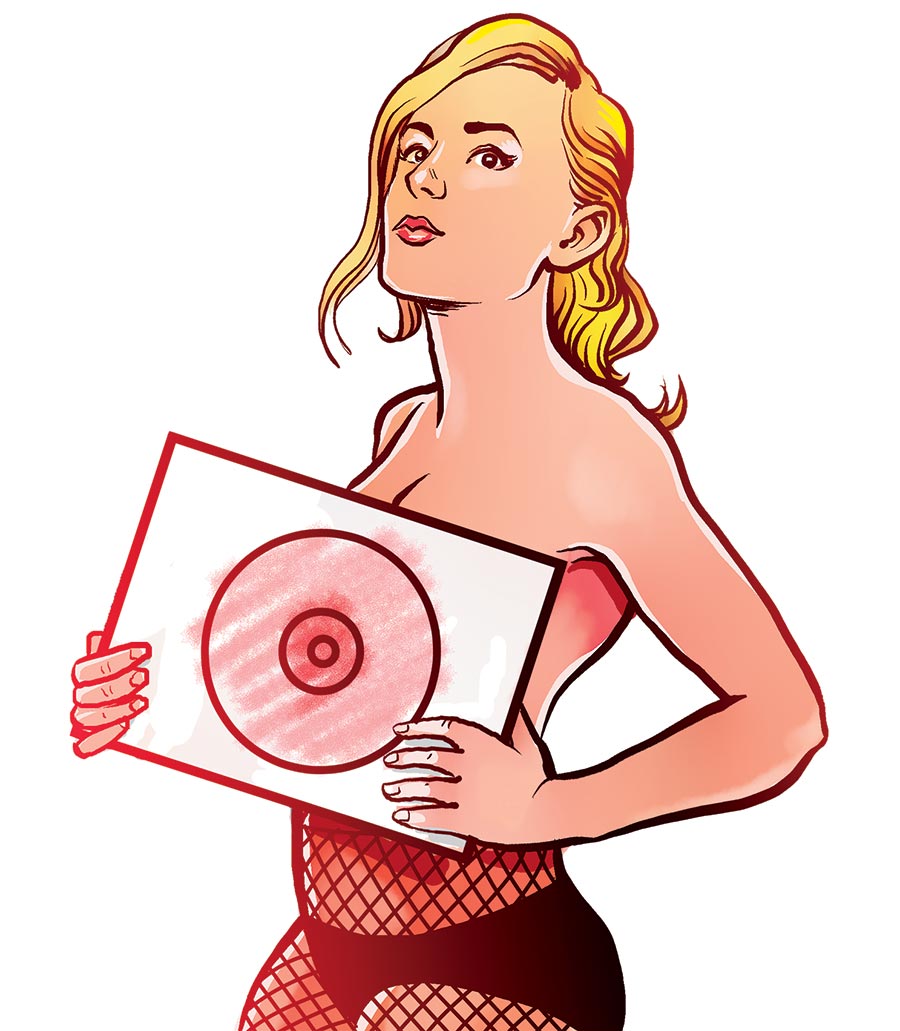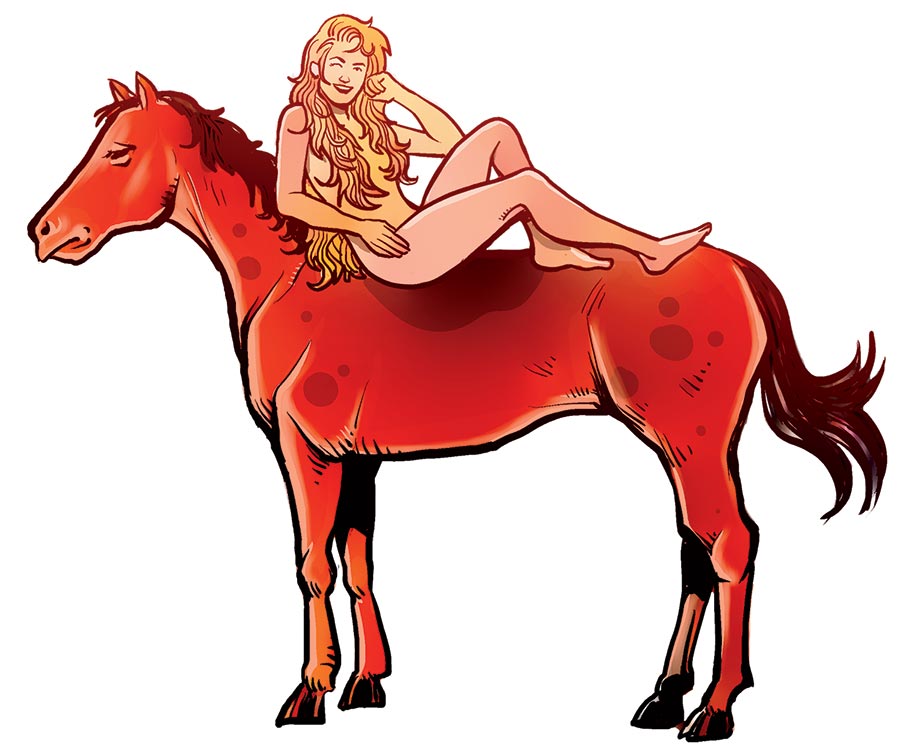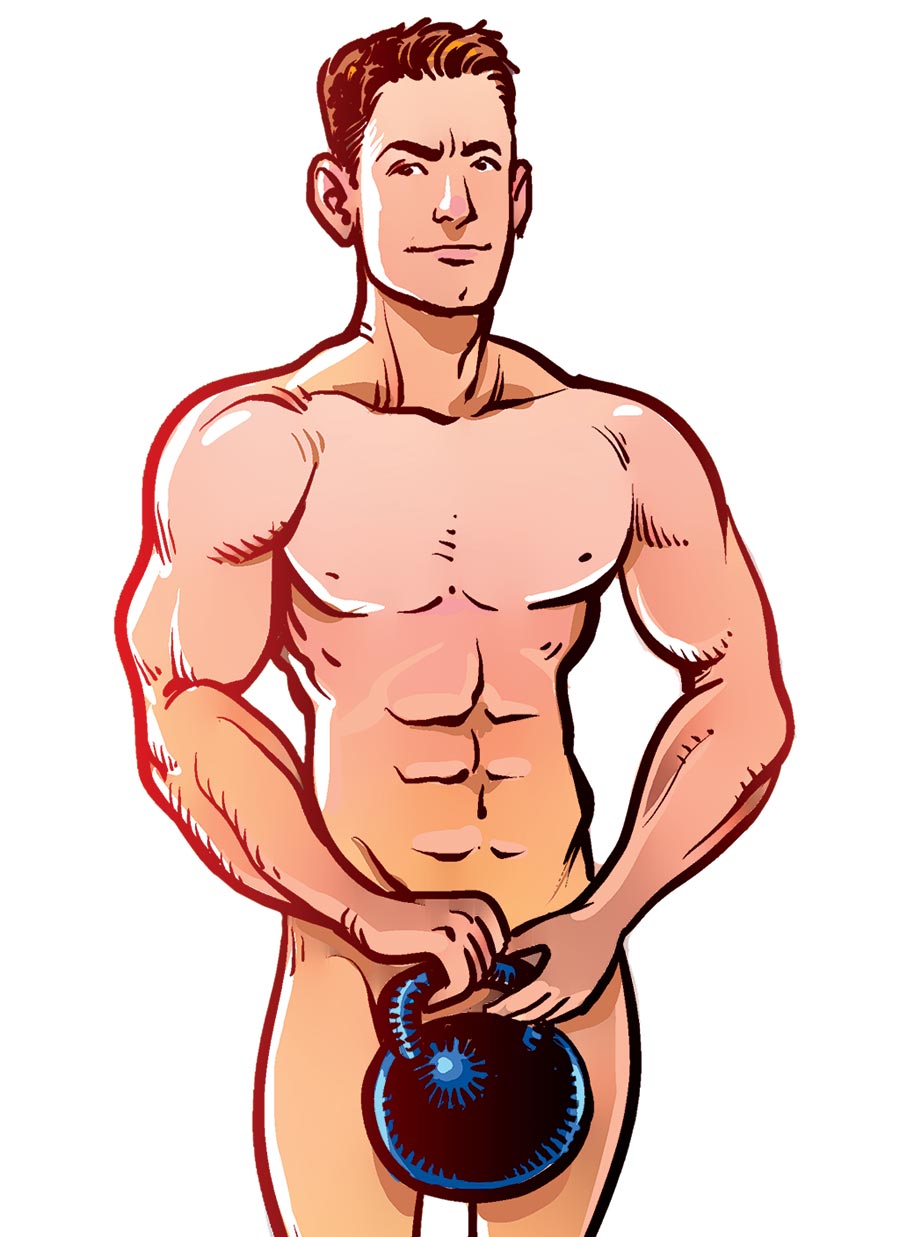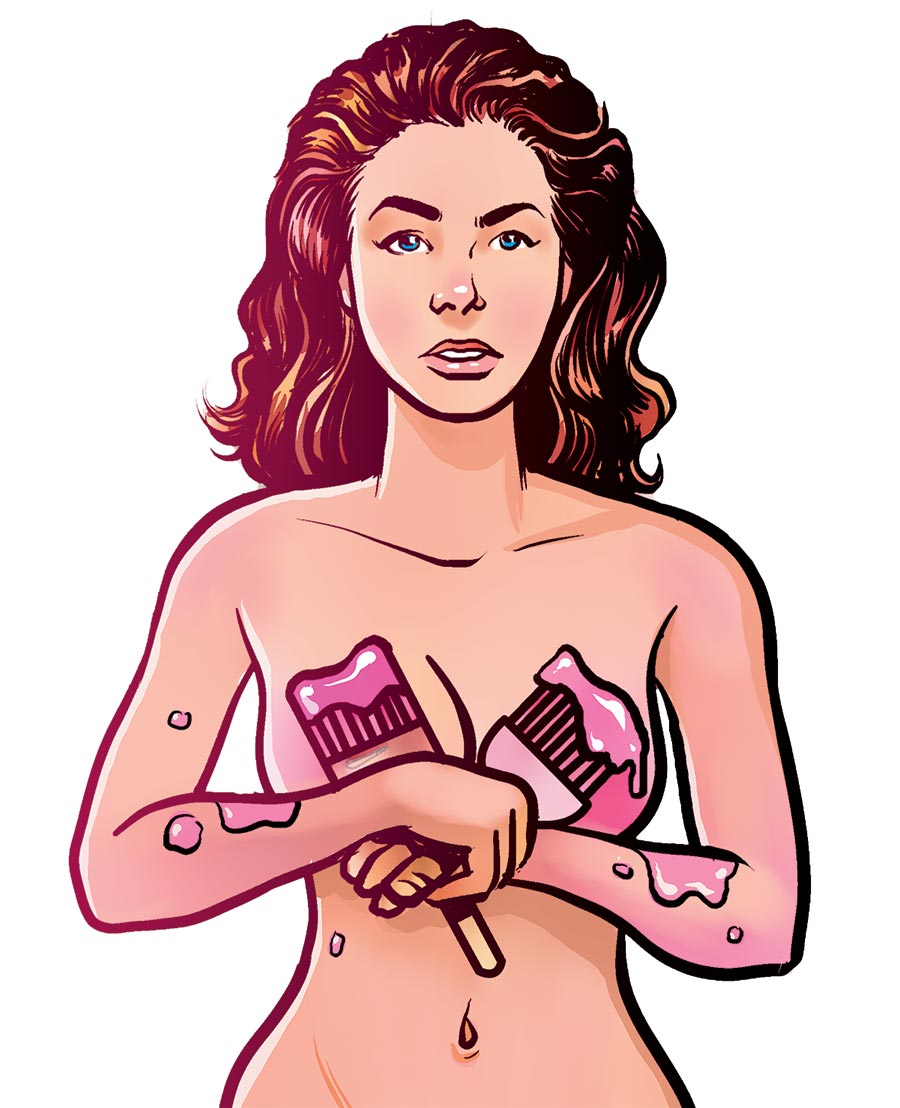
What’s in a name? A classification that’s too strict, if you’re talking about breasts, according to local transgender performance artist Bea Sullivan-Knoff. She’s suing the city over an ordinance prohibiting women from exposing their breasts in places that serve alcohol after she was banned in 2016 from performing nude in a one-woman show. Sullivan-Knoff is the latest in a long line of Chicagoans pushing the boundaries of body exposure. Here, a brief history.

1893
Egyptian “belly” dancers on the midway of the world’s fair wear low-slung skirts to showcase their abdominal muscles. Shocked by the “indecent undulations,” the corset-wearing Board of Lady Managers demands an investigation “on behalf of public morality.” Postal inspector Anthony Comstock, founder of the New York Society for the Suppression of Vice, tries to shut it down, but the show’s enormous popularity persuades fair managers to keep it going.
1910
Mary Garden stuns audiences with her “Dance of the Seven Veils” in a Chicago Opera Company production of Salome, which leaves her wearing nothing but “a small piece of nearly transparent flesh-colored silk,” the New York Times reports. Police chief Le Roy Steward says Garden doesn’t so much dance as “wallow around like a cat on a bed of catnip.” The show is canceled after three performances.
1916
Police chief Charles Healey shuts down seven of nine burlesque houses on South State Street, urged on by the morals committee of a federation of local churches. One of the members describes a performance as “body above the breast exposed. A scant net drapery for the hips and a wreath of artificial flowers extending … below the waist. Dance is vile.”

1921
William Burkhardt, the city’s deputy commissioner of public works, issues precise measurements for women’s bathing suits on public beaches. Burkhardt reportedly says that men don’t tend toward the same lascivious dress, but “we’ll keep close tab on those animals too.” The next year, Burkhardt doubles the amount of thigh that women may show: four inches.

1933
On the eve of the world’s fair, Sally Rand rides a horse through the Streets of Paris section costumed as Lady Godiva, with “lots of false hair in the most strategic places,” according to Classic Chicago Magazine. At the fair, Rand performs with ostrich feather fans, for which she is arrested for indecency. A superior court judge declines to issue an injunction to stop Rand’s shows. “Lots of people would like to put pants on horses,” he says.

1958
Police raid Kris Studio on Clark Street, owned by Chuck Renslow, a photographer and publisher of men’s physique magazines. They seize 300 of his mostly nude photos of male bodybuilders and charge him with “excessive genital delineation.” His lawyers defend him by showing nude male statuary and Sears catalogs featuring men in jockstraps.
1992
In an attempt to rein in the nude dancing that had proliferated in bars and nightclubs in the 1970s and 1980s — and the sexual violence that supposedly accompanied it — Chicago enacts an ordinance banning nudity in establishments that serve alcohol.

2014
Activist Sonoko Tagami paints her breasts to comply with a city ordinance that requires that an “opaque covering” shield women’s breasts and attends a protest. Fined $100, she sues, claiming that ordinances forbidding breast exposure discriminate against women. A federal appeals court eventually rules against her.
2018
In November, a U.S. district judge rules that Sullivan-Knoff’s case can go forward. She and her attorneys argue that the concept of “female breasts” loses its narrow definition when the breasts are part of a transgender body — but also that a law applying only to women amounts to unequal treatment.


